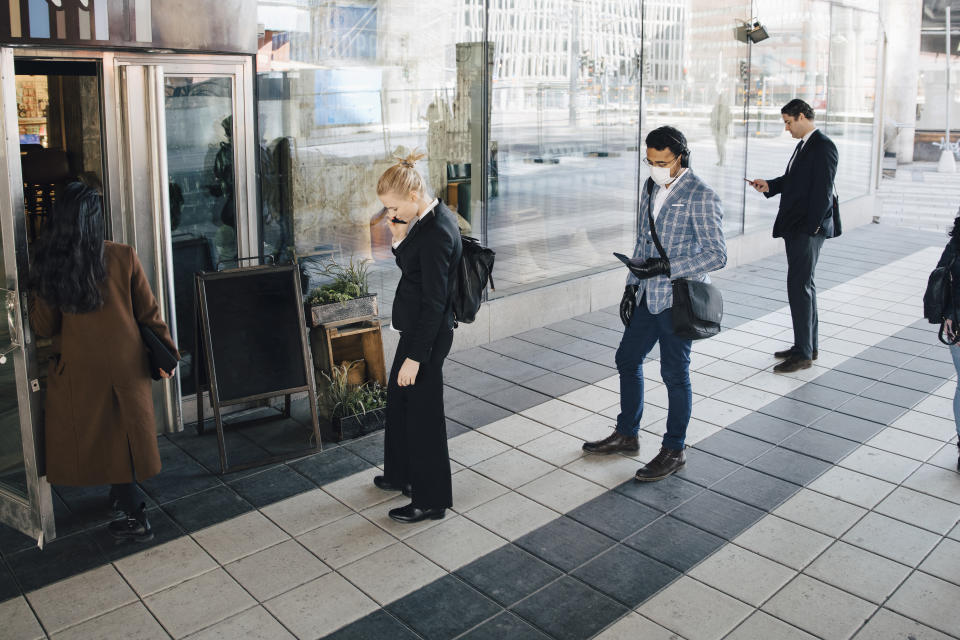Coronavirus: Where does the two-metre rule actually come from?
The government has advised all Britons to maintain a two-metre distance from other people in all environments outside the home during the coronavirus lockdown.
This week, ministers are reported to be debating relaxing this rule in a bid to get people back to work.
But from where did the two-metre rule originate?
The distance hails from 1930s research that suggested two metres was the maximum distance droplets of liquid could travel from coughs or sneezes, the BBC reported.
But other countries have adopted distances such as 1.5 metres instead.

Latest coronavirus news, updates and advice
Live: Follow all the latest updates from the UK and around the world
Fact-checker: The number of COVID-19 cases in your local area
6 charts and maps that explain how coronavirus is spreading
The World Health Organization’s advice is actually considerably more relaxed, suggesting that people should stay one metre, or three feet, from each other.
The WHO writes: “One metre distance between yourself and others. Why? When someone coughs, sneezes, or speaks they spray small liquid droplets from their nose or mouth which may contain virus.
“If you are too close, you can breathe in the droplets, including the COVID-19 virus if the person has the disease.”
In the UK, scientists have been critical of that number, describing it as having been “conjured up out of nowhere”.
Read more: Coronavirus shows how vulnerable societies are, says Greta Thunberg
Robert Dingwall, from the New and Emerging Respiratory Virus Threats Advisory Group (Nervtag), told Radio 4’s Today programme: “I mean, the two-metre rule was conjured up out of nowhere.
"Well, there is a certain amount of scientific evidence for a one-metre distance which comes out of indoor studies in clinical and experimental settings.
“There's never been a scientific basis for two metres, it's kind of a rule of thumb. But it's not like there is a whole kind of rigorous scientific literature that it is founded upon.
“I think it will be much harder to get compliance with some of the measures that really do not have an evidence base.”
Read more: Dying Mum’s plea for life-prolonging treatment to see her through coronavirus
Other scientists have suggested that masks could be key to relaxing the two-metre rule.
William Keevil, a professor of environmental healthcare at the University of Southampton, said: “The main scenario for the public wearing a mask is in crowded environments where keeping a two-metre gap is difficult such as stations, trains and buses.”

 Yahoo News
Yahoo News 


